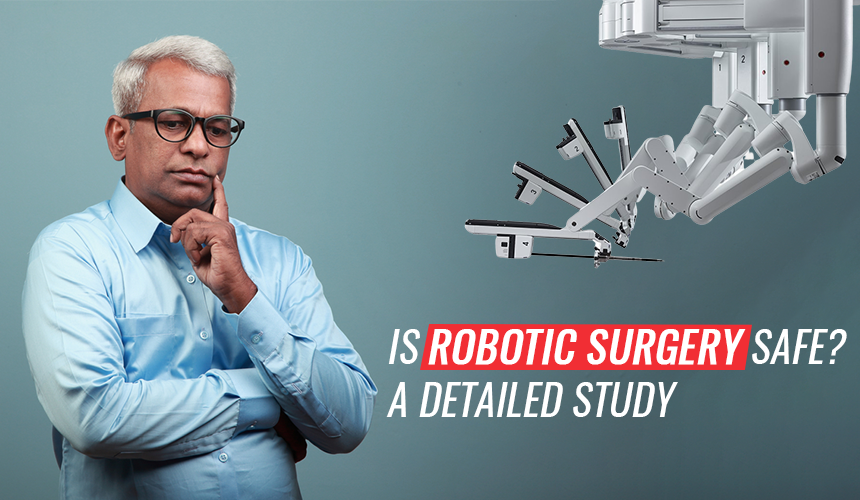Is Robotic Surgery safe? A detailed study
Modern surgical technology has improved the surgical experience for patients. The process of carrying out medical procedures with the help of robots is known as robotic surgery or robot-assisted surgery.
The surgical procedure includes 3 consoles, one for the patient with arms attached to the camera, and various instruments. Second, the doctor with an eyepiece to see a magnified view of the surgical site and modules to control the arm and perform surgery. Third magnification screen for the rest of the team to view and assist.
With the advancement of technology, robotic surgery has become a transformative approach in medical procedures. However, as this innovation gains prominence, the question “Is robotic surgery safe?” in terms of human interaction has emerged. In this blog, we delve into the realm of robotic surgery, addressing concerns and providing insights into the safety measures that make it a reliable option for medical interventions.
Ensuring Safety in Robotic Surgery:
- Surgeon Expertise: Behind every successful robotic surgery is a skilled surgeon. Surgeons undergo specialized training to operate robotic systems, ensuring that they can effectively control and guide the robotic arms during the procedure.
- Enhanced Precision: Robotic systems offer enhanced precision, allowing surgeons to make minute movements that are difficult to achieve manually. This reduces the risk of errors and ensures greater accuracy.
- Real-time Monitoring: Surgeons closely monitor the robotic system's movements through a console, ensuring that they remain in control throughout the procedure. In case of any unforeseen issues, surgeons can intervene immediately.
- Emergency Shutdown: Robotic systems are equipped with emergency shutdown mechanisms that allow surgeons to halt the procedure instantly if necessary. This feature adds an extra layer of safety and control.
- Multidisciplinary Approach: In complex cases, robotic surgery involves a team of experts, including surgeons, anesthesiologists, and nurses. This collaborative effort ensures that all aspects of the surgery are managed with precision.
Addressing Human Interaction Concerns:
- Surgeon-Patient Communication: Despite the presence of robotic systems, human interaction remains a fundamental aspect of robotic surgery. Surgeons communicate with patients before, during (in some cases), and after the procedure, ensuring personalized care and addressing any concerns.
- Patient Evaluation: Surgeons conduct thorough preoperative assessments to ensure that patients are suitable candidates for robotic surgery. This human-centered approach ensures patient safety and favorable outcomes.
- Postoperative Care: After the surgery, patients receive human-driven care and support. Surgeons and medical staff monitor recovery, address any issues, and provide guidance for a smooth healing process.
Advantages associated with robotic surgery
Compared to open surgery, robotic surgery has several advantages for patients, including:
- shortened hospital stays
- decreased discomfort and pain
- little scarring
- fewer, smaller incisions mean a lower risk of infection
- reduced transfusions and bleeding
- quicker recuperation and return to regular activity
World of Urology's urologists shine as beacons of excellence, offering cutting-edge treatments in Robotic Uro Oncology, Robotic Urology, and Robotic Uro Gynaecology. Their unwavering commitment to patient care, coupled with the innovative use of robotic technology, exemplifies a steadfast dedication to safety, precision, and successful outcomes.
By combining their expertise with state-of-the-art equipment, these experts continuously address people's concerns about why robotic surgery is safe. The seamless integration of human skill and technological prowess ensures that patients receive the best possible care, setting a remarkable standard for urological treatments that are both safe and pioneering.


